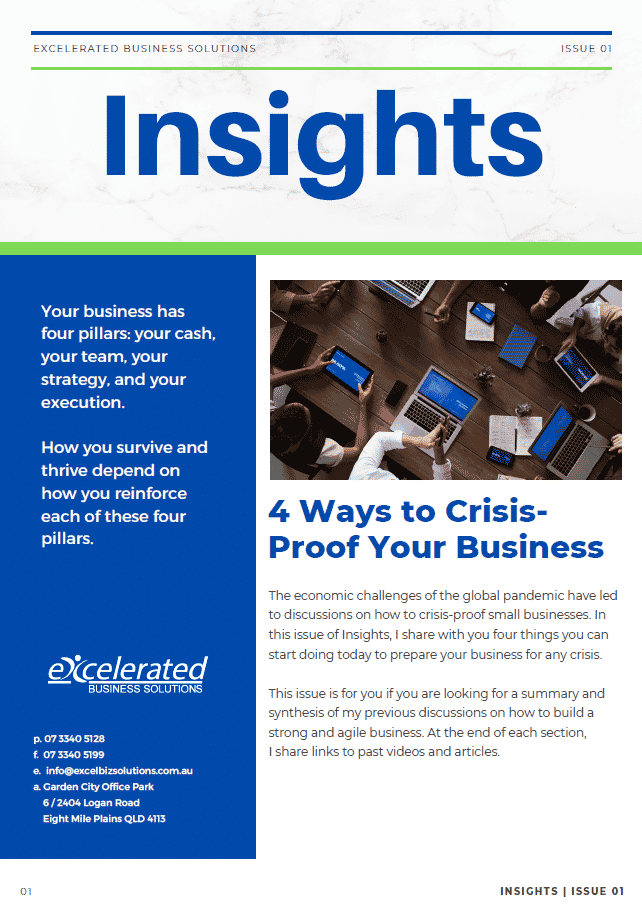What are the challenges that small businesses face today? And what prevents businesses from overcoming these challenges?
Most experts agree that most businesses face the following challenges: client dependency, founder dependency, fatigue and demotivation, staying relevant and updated with trends, money management issues, finding balance between quality and growth. On the surface, many businesses share these challenges. But if we dig deeper, you’ll find that the root cause for these challenges differ for each business. With different root causes, there isn’t a one-size-fits-all solution to a single challenge. Some of the challenges that businesses face are often symptoms of a deeper problem.
In the first of a three-part series, I will discuss the two challenges: client dependence and founder dependence. I will explore the underlying reasons for why businesses face these challenges so that you can focus on addressing these underlying reasons. In doing so, you not only address the symptoms but eliminate the problem at the source.
Challenge 1: Relying on a single or a handful of clients
In a tough market, having one good paying client is already a blessing, because one is better than none. It also puts your business at a greater risk. What happens when that client decides to leave?
In 2016, McDonald’s Australia decided to cancel its contract with A2Z Property Maintenance, a small cleaning business. This forced the 3-year-old company to shut down. It is unfortunate, but this can happen if businesses continue to rely on a single client.
The obvious answer to overcoming this challenge is by increasing and diversifying your client base. Most experts advise that businesses offer a wide range of products and services to capture a different market. Others also advise establishing a lead generation funnel that will allow businesses to find leads and help them convert these leads into paying customers.
While the advice is quite obvious, following it and carrying it out is another challenge. Developing new products, new services, and a lead generation funnel is a difficult challenge to some business owners. This is not to say that these business owners are incapable of diversifying their client base. Most of the time, it isn’t for lack of skill or knowledge to do these things—it is the roadblocks that prevent business owners from moving forward with these obvious solutions.
Some business owners are set back by a subconscious fear of rejection, and so they stop even before they even begin. Yet others want to control the entire process and end up doing it themselves. In doing so, they try to balance running the business while embarking on a business development project, which is tough to do. The need for control prevents them from working with someone who could help them or even do it even better.
Other times, the difficulty that businesses face in diversifying the client base may be a symptom of another challenge:
Challenge #2: Depending too much on the founder or business owner
Many businesses suffer from founder dependence, and it is often caused by the founder being unable to delegate certain decisions and responsibilities as the business grows.
Technically, overcoming this challenge should be easy—just learn to let go. Find someone to delegate tasks and responsibilities. Find someone you can mentor, or if you can’t find someone within the organisation, hire one. As the business grows, plan for succession to grow even without the founder or business owner taking the lead.
But in practice, this is a major stumbling block because many founders feel that they need to be heavily involved in the business for it to grow. This need for full control, however, places the business at risk. It may prevent the organisation from growing. Business leaders also miss out on finding individuals who can do it better or allowing current talent to accomplish business goals. Furthermore, what would happen to the business if the business owner falls sick and fails to run the business as a result?
This was a fear in 2004 when the late Steve Jobs learned that he had a rare pancreatic cancer. Until his death in 2011, his health and how it will impact Apple became a hot topic and a cause of concern for investors and clients. Apple was Steve Jobs—what happens if he passes away? Thankfully, Jobs had a succession plan. He was able to mentor not just Tim Cook, who became CEO in 2011, but was also able to establish a world-class executive education system, more popularly known as Apple University, to help him execute his succession plan.
This is good news for Apple. But many businesses continue to face the challenge of founder dependency. Having to worry about every single element of a business can lead to yet another challenge: fatigue and demotivation, another small business challenge we will discuss in the next video.



